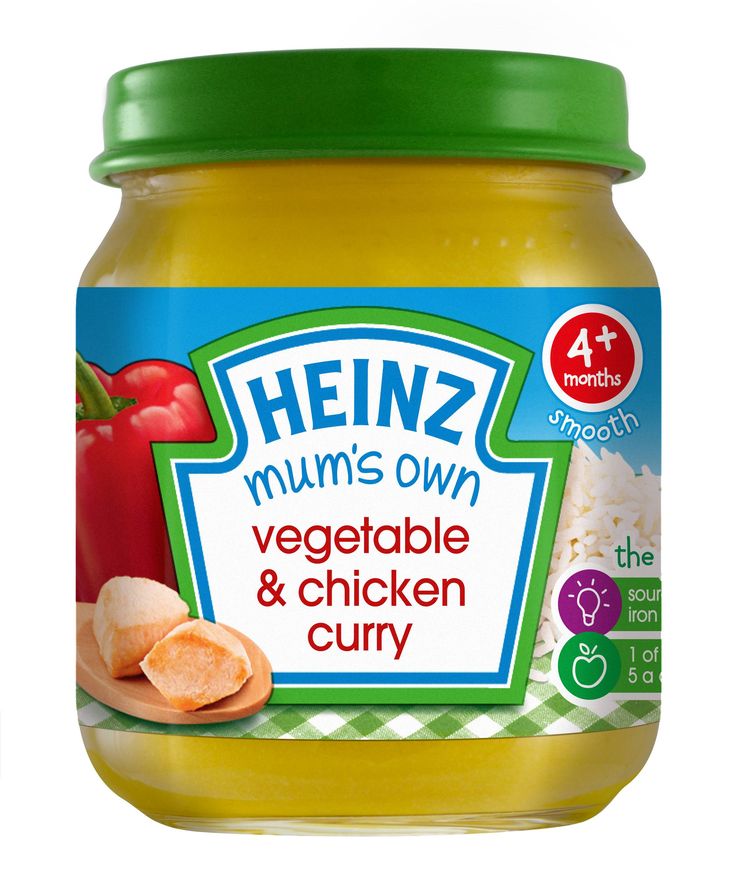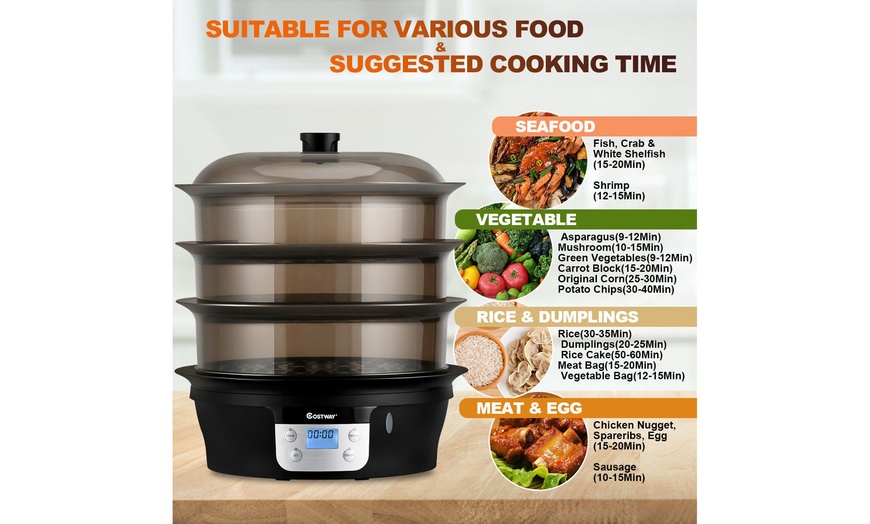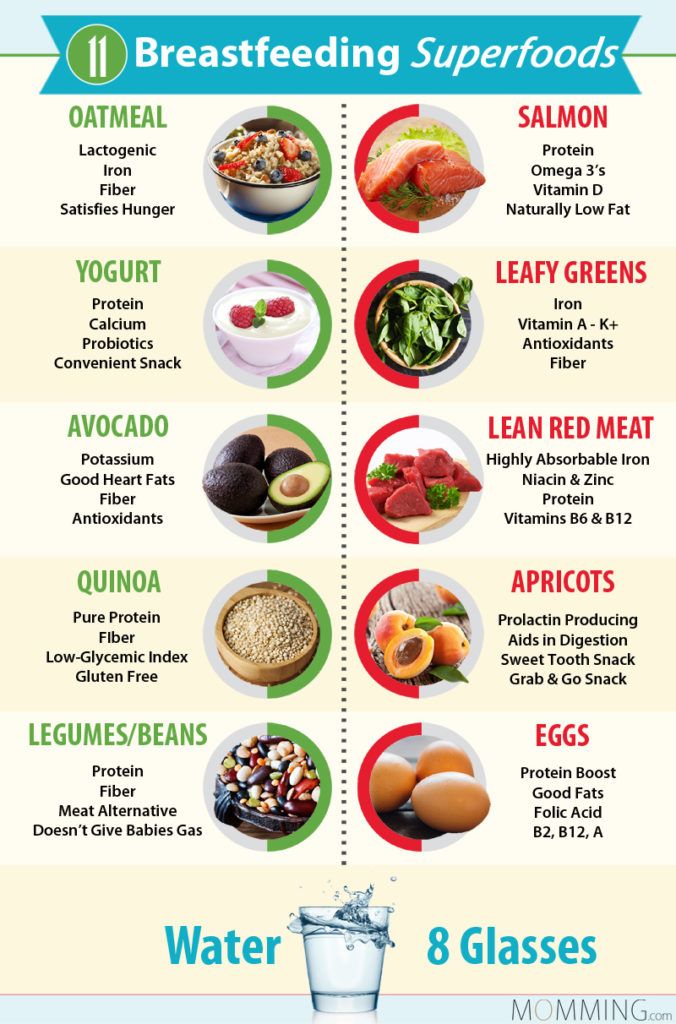Food babies should avoid
Foods to avoid giving babies and young children
Salt
Babies should not eat much salt, as it's not good for their kidneys.
Do not add salt to your baby's food or cooking water, and do not use stock cubes or gravy, as they're often high in salt.
Remember this when you're cooking for the family if you plan to give the same food to your baby.
Avoid salty foods like:
- bacon
- sausages
- chips with added salt
- crackers
- crisps
- ready meals
- takeaways
Sugar
Your baby does not need sugar.
By avoiding sugary snacks and drinks (including fruit juice and other fruit drinks), you'll help prevent tooth decay.
Saturated fat
Do not give your child too many foods that are high in saturated fat, such as crisps, biscuits and cakes.
Checking the nutrition labels can help you choose foods that are lower in saturated fat.
See more on food labels.
Honey
Occasionally, honey contains bacteria that can produce toxins in a baby's intestines, leading to infant botulism, which is a very serious illness.
Do not give your child honey until they're over 1 year old. Honey is a sugar, so avoiding it will also help prevent tooth decay.
Whole nuts and peanuts
Whole nuts and peanuts should not be given to children under 5 years old, as they can choke on them.
You can give your baby nuts and peanuts from around 6 months old, as long as they're crushed, ground or a smooth nut or peanut butter.
If there's a history of food allergies or other allergies in your family, talk to your GP or health visitor before introducing nuts and peanuts.
See more on food allergies in babies and young children.
Some cheeses
Cheese can form part of a healthy, balanced diet for babies and young children, and provides calcium, protein and vitamins.
Babies can eat pasteurised full-fat cheese from 6 months old. This includes hard cheeses, such as mild cheddar cheese, cottage cheese and cream cheese.
Babies and young children should not eat mould-ripened soft cheeses, such as brie or camembert, or ripened goats' milk cheese and soft blue-veined cheese, such as roquefort. There's a higher risk that these cheeses might carry a bacteria called listeria.
There's a higher risk that these cheeses might carry a bacteria called listeria.
Many cheeses are made from unpasteurised milk. It's better to avoid these because of the risk of listeria.
You can check labels on cheeses to make sure they're made from pasteurised milk.
But these cheeses can be used as part of a cooked recipe as listeria is killed by cooking. Baked brie, for example, is a safer option.
Raw and lightly cooked eggs
Babies can have eggs from around 6 months.
If the eggs are hens' eggs and they have a red lion stamped on them, or you see a red lion with the words "British Lion Quality" on the box, it's fine for your baby to have them raw (for example, in homemade mayonnaise) or lightly cooked.
Hens' eggs that do not have the red lion mark should be cooked until both the white and yolk are solid. So should duck, goose or quail eggs.
So should duck, goose or quail eggs.
Avoid raw eggs, including uncooked cake mixture, homemade ice creams, homemade mayonnaise, or desserts that contain uncooked egg that you cannot confirm are red lion stamped.
Rice drinks
Children under 5 years old should not have rice drinks as a substitute for breast milk or infant formula (or cows' milk after 1 year old) as they may contain too much arsenic.
Arsenic is found naturally in the environment and can find its way into our food and water.
Rice tends to take up more arsenic than other grains, but this does not mean that you or your baby cannot eat rice.
In the UK, there are maximum levels of inorganic arsenic allowed in rice and rice products, and even stricter levels are set for foods intended for young children.
Do not worry if your child has already had rice drinks.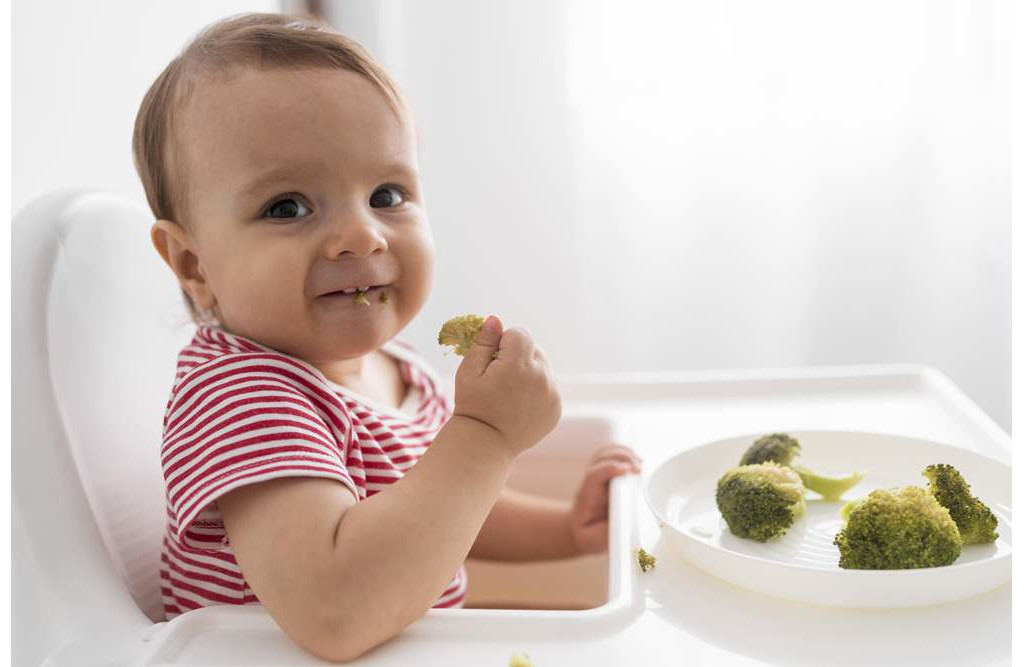 There's no immediate risk to them, but it's best to switch to a different kind of milk.
There's no immediate risk to them, but it's best to switch to a different kind of milk.
Raw jelly cubes
Raw jelly cubes can be a choking hazard for babies and young children.
If you're making jelly from raw jelly cubes, make sure you always follow the manufacturers' instructions.
Raw shellfish
Raw or lightly cooked shellfish, such as mussels, clams and oysters, can increase the risk of food poisoning, so it's best not to give it to babies.
Shark, swordfish and marlin
Do not give your baby shark, swordfish or marlin. The amount of mercury in these fish can affect the development of a baby's nervous system.
Further information
For more information and advice about babies and food, see:
- food allergies in babies and young children
- your baby's first solid foods
- baby and toddler meal ideas
Foods to Never Feed Your Baby (3 Months of Age to 1 Year)
According to the CDC, you can start introducing solid foods to your baby at around 6 months old. As long as they are receiving a balanced diet and a variety of nutrient-enriched foods, most vegetables, fruits, proteins, and grains. When it comes to more allergenic foods, it is best to introduce them after other baby-friendly foods. Always consult your pediatrician with concerns.
As long as they are receiving a balanced diet and a variety of nutrient-enriched foods, most vegetables, fruits, proteins, and grains. When it comes to more allergenic foods, it is best to introduce them after other baby-friendly foods. Always consult your pediatrician with concerns.
Growing babies soon start to show interest in trying new foods, and it's normal to want to introduce them to new tastes and textures. But not all foods are safe for your baby. Here is a list of foods you should avoid feeding your baby during the first year of growth.
More: Can You Eat Thanksgiving Turkey While Pregnant?
Pureed Foods vs Finger Foods
Babies are typically introduced to solid foods around six months of age. For newborns and babies less than six months old, solid foods may pose a choking hazard. So for young babies, many parents will turn to baby pureed foods. Pureed foods are softer than finger foods and easier on a baby’s digestive system. However, some parents turn to baby-led weaning which can also be a great option to introduce your little one to solid foods.
Honey
Infants under a year old should not be fed any form of honey (raw, baked, or cooked). Honey is bad for babies because it can harbor Clostridium botulinum, which can produce botulinum spores. These spores secrete toxins that can lead to muscle weakness, poor sucking, a weak cry, constipation, decreased muscle tone, and even paralysis in young infants. An infant's intestinal tract isn't strong enough to fight off these spores and toxins.
Infant botulism can be prevented by avoiding raw honey and avoiding contact with soil contaminated with the same C botulinum spores. This is rare and mostly found at agricultural sites in Utah, California, or Pennsylvania.
Cow's Milk
Stick to breast milk or formula until your child's first birthday. A child under the age of one can't digest the enzymes and proteins in cow's milk, and certain minerals in it can cause damage to your baby's kidneys. This is also true for certain dairy products such as cottage cheese. Also, unlike breast milk or formula, cow's milk doesn't provide all the proper nutrients for a growing infant. So if you are breastfeeding or if you are bottle feeding with breast milk or infant formula then keep doing so.
Also, unlike breast milk or formula, cow's milk doesn't provide all the proper nutrients for a growing infant. So if you are breastfeeding or if you are bottle feeding with breast milk or infant formula then keep doing so.
Egg Whites
Don't feed egg products to a child under the age of one, to avoid an allergic reaction or allergies in the future. While the proteins in egg yolks are seldom a source of allergens, the proteins in egg whites may cause allergic reactions. By the age of five, a child normally outgrows the potential for an allergic reaction to egg whites.
Citrus
Avoid feeding citrus fruits and juices to your baby for the first couple of months. These foods are high in Vitamin C and acid, which can cause an upset tummy and/or acid reflux in your baby. Remember, their digestive system is still developing.
Seafood/Shellfish
Another potential allergen for babies is seafood, and particularly shellfish. Talk to your pediatrician before feeding your baby boneless fish -- even tuna. Do not give any sort of shellfish (such as shrimp, clams, swordfish, mackerel, or crabmeat) to your baby until it's been discussed.
Do not give any sort of shellfish (such as shrimp, clams, swordfish, mackerel, or crabmeat) to your baby until it's been discussed.
Wheat
Due to allergens in wheat, it is best to wait until your baby is one, two, or even three years old before introducing it into your baby's diet. If you have checked with your pediatrician and are sure that your baby hasn't had an allergic reaction to rice, oats, or barley, you may try introducing wheat at the age of eight or nine months.
Large Chunks of Food
It is widely recommended that you feed your child breast milk or formula for the first four to six months. Once you start baby on solids, pea-sized foods are safest, to prevent choking. Make sure that vegetables are diced and cooked up soft, and cut fruits into quarters to avoid them getting stuck in your child's throat. Meats and cheese should also be cut into very small pieces or shredded.
Soft, Sticky Foods
While most soft foods are good for young babies, some soft foods should be avoided. Sticky foods like jellies and marshmallows should not be fed to a baby before six months as these foods can get stuck in a baby’s throat and block the child’s airway.
Sticky foods like jellies and marshmallows should not be fed to a baby before six months as these foods can get stuck in a baby’s throat and block the child’s airway.
Small, Hard Foods
Foods like whole nuts, popcorn, whole grapes, raw vegetables, raisins, candies, dried fruits, seeds, or any other small, hard food should not be given to a baby. They are all choking hazards and can easily become lodged in your baby's throat. Any food you give your baby should be diced into small bits and cooked until soft.
Fruits
Below is some insight on certain fruits that many parents have questions about feeding their baby.
- Strawberries and raspberries: Many berries are packed with vitamin C and are good for babies and young children. The American Academy of Pediatrics that you hold off introducing these fruits until after they have tried other solids first.
- Pineapple: Pineapple is considered a safe food for your baby to eat. However, it is a firm fruit and should be sliced into thin strips since it can be a choking hazard when cubed.
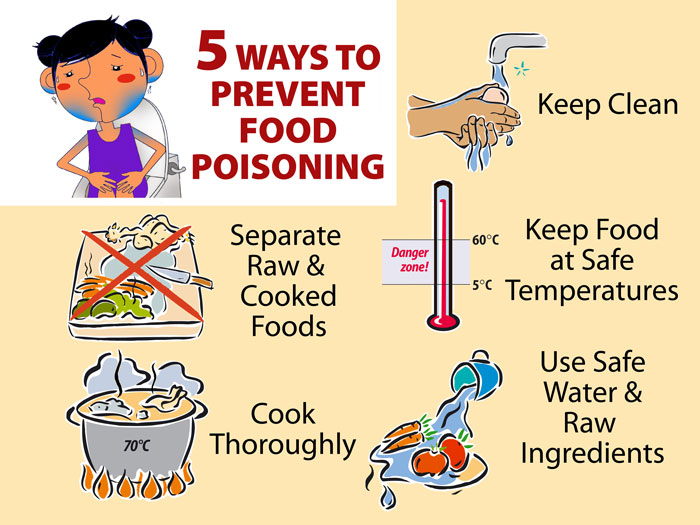
- Melon: Watermelon is a good example of a first fruit you can offer to your baby. It is soft, easy to chew, and full of vitamins. It is made up of mostly water so it is also great for hydration.
- Papaya: This is a superfood that is super healthy and great for your baby. The recommendation is to wait to introduce it to your little one until they are 7 or 8 months old.
Vegetables
Vegetables are healthy options for kids, but when is the right age for babies to start eating their veggies? Here is a list of veggies and produce that parents have questions about. You can find below whether or not they are safe to give to your baby.
- Spinach: Believe it or not, raw spinach is full of nitrates. This is not to be confused with synthetic nitrates but is still not good to give much to little ones. It is recommended that if you give them spinach, make sure it is cooked and pureed.
- Lettuce: This can be hard for your baby to chew, so it's best to wait until they are between 9 months and 1 year old.

- Peas: Green peas are a great starter food. They are easy to pick up, offer a new texture, are small enough to avoid choking and can be pureed.
- Onions: Many parents add cooked onions to homemade baby food. They are full of vitamin C and can be introduced between 6 and 8 months old.
- Garlic: If you cook frequently then you know that garlic can add a whole new flavor to certain foods. You can cook down and add a small amount to your baby's food between 6 and 8 months old.
- Sweet Potatoes: This is another great first solid. Soft, cooked sweet potato cut into chunks is perfect for a 6-month-old.
- Potatoes: These are considered starchy vegetables so even though they are safe to give to your baby, you will want to do it in moderation.
Meats
Introducing meat to your baby's diet can happen after starting solids, which is usually around 6 months. Poultry and lean beef are fine to give your little one in small amounts. Below are two types of meat that should be avoided.
Below are two types of meat that should be avoided.
- Hotdogs: Hotdogs are a choking hazard. It is not recommended to give them to young children under 4 years of age. When they are old enough, they can be thinly sliced or minced.
- Bacon: It is best to wait until after your baby's first birthday to give them any bacon. It is full of synthetic nitrates and possible carcinogens. It is generally considered unhealthy and should be offered rarely.
Fruit Juice
Most juices are full of added sugar. Since babies are generally still drinking from bottles under 1 year old, it is not advisable to put fruit juice in them. It is known to cause tooth decay. Offer your baby a little water after 6 months if you are looking to give them something besides breast milk or infant formula.
What About Peanut Butter?
Experts previously believed that introducing peanut butter or any sort of nut product at an early age could lead to nut allergies. Times have changed and many pediatricians encourage the introduction of peanut butter to children between 6 and 8 months after they have tried a few solid foods with no issues. The AAP recommends talking with your pediatrician about introducing nut products to your baby, once he is eating solid foods. If your baby doesn't have any food allergies or risk factors, your doctor will probably advise feeding him a thin layer of creamy (not chunky) peanut butter on a cracker or bread, or foods that have peanut butter in them. Never give whole peanuts or nut pieces to a child under age 4 because of the choking risk.
Times have changed and many pediatricians encourage the introduction of peanut butter to children between 6 and 8 months after they have tried a few solid foods with no issues. The AAP recommends talking with your pediatrician about introducing nut products to your baby, once he is eating solid foods. If your baby doesn't have any food allergies or risk factors, your doctor will probably advise feeding him a thin layer of creamy (not chunky) peanut butter on a cracker or bread, or foods that have peanut butter in them. Never give whole peanuts or nut pieces to a child under age 4 because of the choking risk.
If your child is at high risk for a peanut allergy or other food allergies (because of family history or if he has an existing food allergy or eczema), your doctor might recommend doing allergy testing before introducing nut products or feeding your child nut products at the doctor's office in case of an allergic reaction.
90,000 what foods children should not eat and how to teach them to eat right? Proper nutrition of children is underestimated by many. After all, our parents, grandparents somehow grew up without this knowledge. But in fact, the older generations, who grew up in conditions of total scarcity, did not have to fight temptations. They just didn't exist. And the products that were available were much more suitable for the definition of proper nutrition than the food that children now eat. And it's not even about fast food, the dangers of which are known to almost everyone. Nutritionists and other children's doctors spoke about what foods children should not eat and how to teach them to eat right in an interview with MIR 24.
After all, our parents, grandparents somehow grew up without this knowledge. But in fact, the older generations, who grew up in conditions of total scarcity, did not have to fight temptations. They just didn't exist. And the products that were available were much more suitable for the definition of proper nutrition than the food that children now eat. And it's not even about fast food, the dangers of which are known to almost everyone. Nutritionists and other children's doctors spoke about what foods children should not eat and how to teach them to eat right in an interview with MIR 24.
“Nutrition is one of the main factors determining the normal development of a child, it has the most direct impact on his growth and health,” says pediatrician, senior medical consultant of Teledoctor 24 Maria Mamedova . - It is most important to observe the principles of rational nutrition in children of early and preschool age. This period is characterized by intensive growth processes, improvement of the functions of many organs and systems, especially the nervous system, enhanced metabolic processes, and the development of motor activity.
What not to eat for babies and preschool children
Vinogradov pediatrician Vladislav Zyablitsky , in addition to harmful foods for children of all ages, pediatricians emphasize foods that children under 3 years old should not eat. Here they are.
- Seafood such as shrimp, mussels, crabs (allergic).
- Sausages, sausages, sausages (overflowing with flavors, dyes, preservatives).
- Lamb, fatty pork, meat of waterfowl (geese and ducks) - contain an excessive amount of refractory fats of animal origin.
- Melon and grapes (increase gas production and increase the load on the pancreas).
- Everyone's favorite delicacy is ice cream (has an increased level of fat content, sugar content, harmful additives that can cause allergies).
- Honey if the child is prone to food allergies.
- "Adult" non-adapted milk (dangerous with allergies, problems with the gastrointestinal tract, decreased immunity of the child's body, metabolic disorders, atherosclerosis and arterial hypertension in the future).
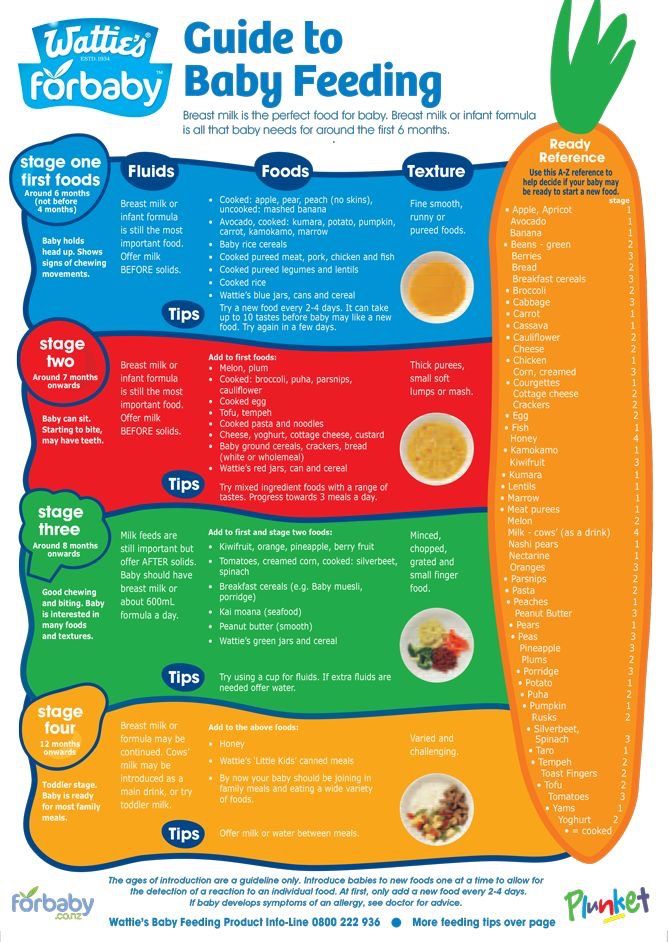
- Cakes, cakes, sweets, chocolate, puff or shortbread cookies, other confectionery. They are crammed with food additives, sugar, fat, but contain almost no nutrients.
- Cocoa - due to the high fat content of the drink and the invigorating alkaloid theobromine.
- Do not give tomatoes until 1 year of age (they overload the kidneys).
- Only after 1.5 years is it permissible to give the child garlic, onions, bell peppers in small amounts.
- Pickled cucumbers and pickled tomatoes should not be given until 2 years of age (due to bacteria).
- Nuts, especially peanuts (very strong allergens).
- Celery (excessively activates the activity of the pancreas).
- Red and black caviar is forbidden up to 5 years (very allergenic, includes preservatives; contains excess salt, which is fraught with kidneys). For the same reason, salted fish is prohibited.
- Mushrooms - the child's body does not contain enough enzymes to digest them.
 In addition, mushrooms accumulate radioactive substances and heavy metals.
In addition, mushrooms accumulate radioactive substances and heavy metals.
Strictly not recommended for all children, regardless of age: salty crackers, chips, french fries, hamburgers and other fast food.
“The best way to avoid a child's love for such food is not to go to places where it is sold. Confidently walk past the bright signs of fast food restaurants, ignore the aroma of pies in a kiosk near the subway, forget about noodles and instant soups. After all, this food is a direct path to obesity, diabetes, to malfunctions of the immune and cardiovascular systems,” says Maria Mammadova. The pediatrician adds a few more to the list of products prohibited for preschoolers.
- Semi-finished products . It is fast, convenient, but not useful for children whose gastrointestinal tract is imperfect - the processes of digestion, the production of enzymes and bile in preschool children are still immature. The nutritional value of semi-finished products is a dubious question, and one can only guess about the qualitative composition of their components.
 For the production of semi-finished products, vegetable proteins are often used, which are inferior to meat and fish in terms of amino acid composition. Excess salt in ready-made semi-finished products creates an unnecessary burden on the child's kidneys, food additives provoke allergies, spices irritate the gastrointestinal mucosa, starch and soy are poorly digested, causing functional disorders of the digestive system.
For the production of semi-finished products, vegetable proteins are often used, which are inferior to meat and fish in terms of amino acid composition. Excess salt in ready-made semi-finished products creates an unnecessary burden on the child's kidneys, food additives provoke allergies, spices irritate the gastrointestinal mucosa, starch and soy are poorly digested, causing functional disorders of the digestive system. - Minced meat for children's food is best prepared by yourself, as the store-bought often contains a lot of fat, connective tissue, and bird skin. The same applies to minced fish: it is prepared from low-value fish varieties, and only a production specialist can control the quality of the product.
- Sausages . Some parents sometimes replace a full-fledged meat or fish dish on the children's table with sausages - for the same reasons of saving time. The cost of a kilogram of the most optimal quality sausages is almost equal to the price of meat (veal, beef, pork), and sometimes even higher.
 But this does not mean at all that meat of a certain category is present in the composition of the product in the amount stipulated by the regulations. According to GOST, premium sausages consist of beef, pork, powdered milk or cream and eggs. If the product is of a lower grade, then it contains up to 10% trimmed meat, starch and a protein stabilizer. However, on the shelves of shops there are mainly sausages made according to specifications - according to the standards created by the manufacturing enterprise itself. That is why the composition of the product changes and becomes “richer”: various fillers (cheese, paprika), soy, sodium nitrite (color stabilizer) and monosodium glutamate (flavor enhancer), ascorbic and citric acid, as well as salt and spices are added to it. All these components, depending on the concentration in the product, adversely affect the health of the child.
But this does not mean at all that meat of a certain category is present in the composition of the product in the amount stipulated by the regulations. According to GOST, premium sausages consist of beef, pork, powdered milk or cream and eggs. If the product is of a lower grade, then it contains up to 10% trimmed meat, starch and a protein stabilizer. However, on the shelves of shops there are mainly sausages made according to specifications - according to the standards created by the manufacturing enterprise itself. That is why the composition of the product changes and becomes “richer”: various fillers (cheese, paprika), soy, sodium nitrite (color stabilizer) and monosodium glutamate (flavor enhancer), ascorbic and citric acid, as well as salt and spices are added to it. All these components, depending on the concentration in the product, adversely affect the health of the child. - Smoked meat and fish products today are often produced not by the traditional method of smoking, which is also not very useful, but with the use of a special (and very harmful to the human body) substance that gives the product the necessary taste, smell and color.
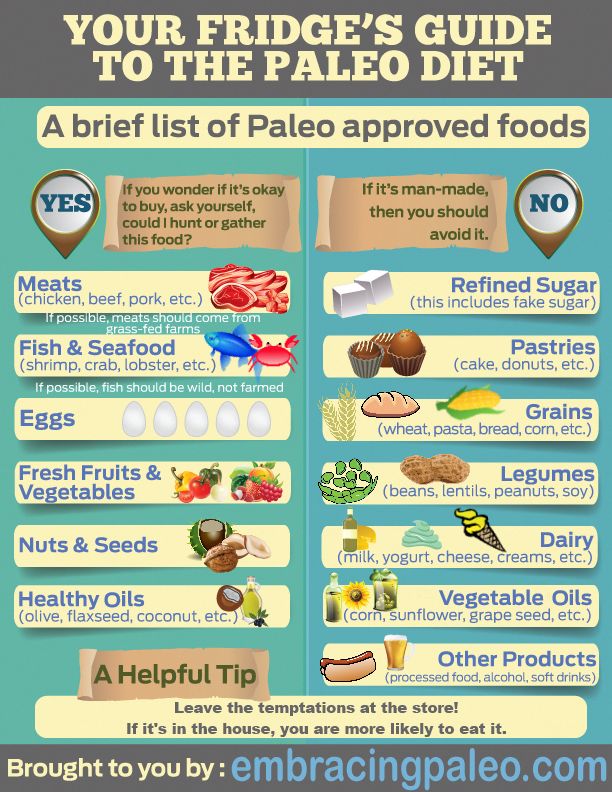
- Carbonated soft drinks . This is a fully synthetic product. And even a certain percentage of natural juice in the composition of some "soda" is not able to compensate for the harm that artificial dyes, preservatives, flavors, sweeteners and carbon dioxide cause to a fragile body. They not only affect the gastrointestinal tract of the child, spoil the tooth enamel, but can also provoke a lot of serious diseases. The best drink for a child is water (clean drinking, from two years old - non-carbonated, but not medicinal), freshly squeezed juice diluted with water, fruit or dried fruit compote, berry juice.
- Vegetables and fruits "out of the can" . There are very few vitamins in products of enhanced heat treatment and long shelf life. Canned vegetables contain a lot of salt and vinegar, fruits - a lot of sugar. And if this is not home preservation, then also synthetic preservatives. Children should be introduced to such products no earlier than seven years.
 It is better to freeze vegetables, fruits and berries in summer and autumn in order to cook delicious vegetable stews, casseroles, berry fruit drinks and fruit desserts in winter. Or buy ready-made frozen products, remembering that the shock freezing method is the most gentle.
It is better to freeze vegetables, fruits and berries in summer and autumn in order to cook delicious vegetable stews, casseroles, berry fruit drinks and fruit desserts in winter. Or buy ready-made frozen products, remembering that the shock freezing method is the most gentle. - Mayonnaise and ketchup . Homemade mayonnaise, a product with a high fat content, can be given to a child only after three years, in small quantities and not systematically. From ready-made mayonnaise, which contains flavors, flavors, dyes, thickeners, stabilizers, emulsifiers and preservatives, it is better to refuse altogether. Ketchup also does not apply to baby food. There are a minimum of vitamins and nutrients in it, hot spices will harm the children's body, and they are produced using all the same preservatives and synthetic additives (to improve color, taste, aroma).
You can, but be careful: from sweets to spices
This group includes products that children, according to Maria Mamedova, can use under certain conditions, although they can only be introduced from the age of three and they should not be present in the diet constantly.
Sweets . Experts believe that chocolate is contraindicated for children under three years old. It creates an extra load on the pancreas, causes allergies, excites the nervous system of the crumbs, and can provoke caries. An alternative to chocolate are sweets made from carob, a sweet powder made from the pulp of carob. It tastes like cocoa, is very healthy and, unlike chocolate, has no "side effects".
The later the child gets acquainted with sweets, the better. But since everything sweet is a source of easily digestible carbohydrates that the body needs, as a dessert, you can occasionally offer your child a little marshmallow, marshmallow, marmalade, jam (while remembering the dangers of synthetic dyes and flavors). It is even better to replace store-bought sweets with berries and fruits, honey (if there is no allergy), dried fruits, sweets and homemade jam.
Flour products . Their regular use provokes excess weight. You can sometimes allow your child to eat a bun or a pie (for an afternoon snack), but it is better to limit yourself to biscuit cookies or drying. Products made from puff, shortbread, pastry, which include margarine, should be completely abandoned - its components increase the level of cholesterol in the blood and provoke the development of vascular diseases in the future.
You can sometimes allow your child to eat a bun or a pie (for an afternoon snack), but it is better to limit yourself to biscuit cookies or drying. Products made from puff, shortbread, pastry, which include margarine, should be completely abandoned - its components increase the level of cholesterol in the blood and provoke the development of vascular diseases in the future.
Herbs and spices . They make the taste and aroma of food richer, but seasonings for children's food must be selected very carefully. After a year, greens (dill, parsley, cilantro) can be added to the child’s food, from 1.5-2 years old - onions, garlic (in hot dishes), from 3 years old - bay leaf. Spices used in adult dishes can irritate a child's esophageal mucosa or provoke allergies.
Ready mixes of spices, various flavoring seasonings should not be added to food for a child, because in addition to the main components, they contain a lot of salt and various preservatives.
Instant porridges .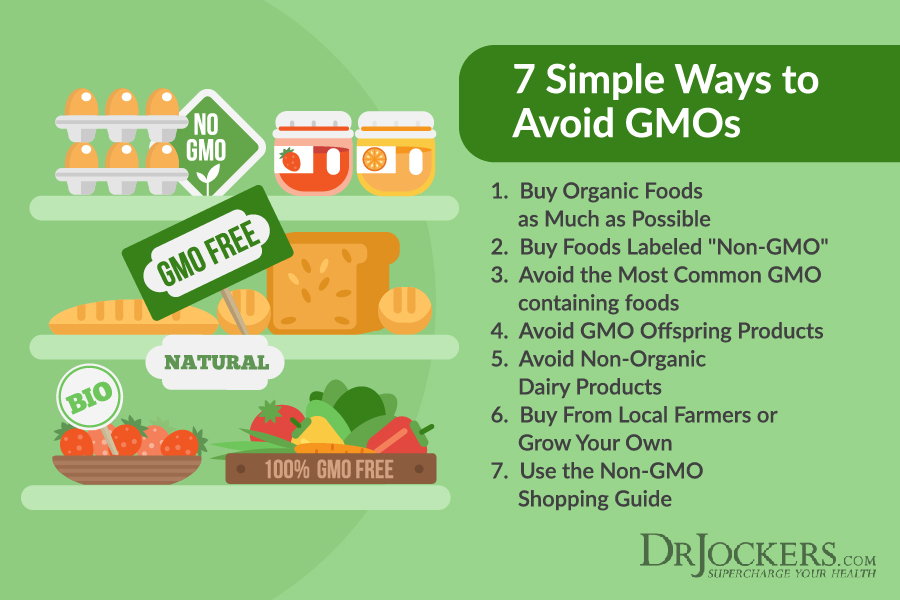 It is very convenient to use them - you do not need to wash the cereal, wait until it is cooked. It is enough just to pour boiling water over a portioned bag, in which everything is already included - sugar, fruit or chocolate, cream or milk. And also - flavors, flavor enhancers and other synthetic additives. The nutrients and vitamins that whole grains contain are lost during the numerous processing steps. Therefore, the use of such porridge in baby food is justified only in emergency cases. For example, on the road - it's still better than eating sausage or fast food.
It is very convenient to use them - you do not need to wash the cereal, wait until it is cooked. It is enough just to pour boiling water over a portioned bag, in which everything is already included - sugar, fruit or chocolate, cream or milk. And also - flavors, flavor enhancers and other synthetic additives. The nutrients and vitamins that whole grains contain are lost during the numerous processing steps. Therefore, the use of such porridge in baby food is justified only in emergency cases. For example, on the road - it's still better than eating sausage or fast food.
How to teach a child to eat healthy food?
“First of all, by example,” says Maria Mamedova. - If the house does not eat junk food, then the child will daily want what he is used to from an early age. Scientists say that even during pregnancy and breastfeeding, the future mother's cravings for certain foods are passed on to the child.
It is important to prepare the right snacks in advance so that children between meals do not grab cookies or candy from the table, but fruit or granulated bran.
Delicious and healthy at the same time.
If there is soda or sweet store-bought juice in the refrigerator, you can give a 100% guarantee that the child will drink it first of all, and not the vital clean water. Therefore, the water filter should be in the most visible place so that it constantly catches the eye.
“Watch what your child eats and praise the correct choice. Focus on those products, the consumption of which leads to health, beauty and excellent sports achievements: depending on what he is passionate about,” says Maria Mammadova.
Most unhealthy foods can be replaced with healthy ones. Potato and corn chips will replace dried fruit slices. Instead of candy, you can eat dried fruits and dried berries. It is important not to confuse with candied fruits, in which there is no less sugar than in candies.
Eating regularly reduces the number of snacks, which means better control of what children eat. If breakfasts, lunches and dinners are held at a common table with adults, then the opportunities to intercept a couple of sweets instead of soup are significantly reduced. But healthy snacks are also not harmful, this is the key to the good functioning of the digestive system. Make them accessible and child-friendly. What can be used if there is no time to cook?
But healthy snacks are also not harmful, this is the key to the good functioning of the digestive system. Make them accessible and child-friendly. What can be used if there is no time to cook?
- Cut carrots, sweet peppers, cucumbers into containers.
- Popcorn free of artificial additives and saturated fat is a great whole grain snack.
- Pour fruit and vegetable smoothies into small bottles.
- Place the bowl of fruit in the most visible place.
Let the children participate in the menu design, so they become more interested in the result. It's always nice to get exactly what you ordered, what you like, for dinner. Do not force yourself to eat unloved foods, no matter how useful they may be. You can always find an equally useful replacement. And pay attention to the fact that healthy products are of high quality.
Reduce the amount of simple sugars in your diet. To do this, it is not at all necessary to put the child on a diet - just look at the label of those products that you buy out of habit, not paying attention to the composition.
- Replace your traditional loaf with whole grain bread.
- Instead of sweet yoghurt, choose natural yoghurt with a fat content of no more than 1-3%.
- Make homemade cookies instead of store bought.
- The best replacements for store-bought drinks are water and fruits or fruit and vegetable smoothies.
- Try to avoid trans fats. They are most commonly found in processed foods, fast food, fried foods, frozen pizzas, pies, cookies, margarines, and sandwich mixes.
- If fried foods are a big part of your diet, try gradually switching to stews, steamed or baked foods.
It is important to maintain a pleasant atmosphere while eating. It is better to postpone the showdown and "debriefing" for another time. TVs and tablets should also be turned off. When a person is busy watching a cartoon or TV show, his brain does not think about food, which adversely affects digestion and leads to obesity.
“By the way, the correct process of eating can be learned from babies,” says Maria Mamedova.
“They only eat when they are hungry, they chew their food thoroughly, giving it all their attention. And they stop eating as soon as they are full. At the same time, children under three years old cannot be forced to eat foods that they do not like. And they choose, as a rule, exactly those that the body needs at the moment.
Schoolchildren and adolescents: six elements of their healthy diet
In school-age children, the need for basic nutrients and energy remains high and is due to physiological and biochemical characteristics: accelerated growth and development, differentiation of various organs and systems, especially the central nervous system, and the intensity of metabolic processes.
“It is important to follow a differentiated approach to determining nutritional needs depending on the type of student's activity,” says Maria Mamedova. - So, for schoolchildren studying in specialized schools with increased mental and physical stress (mathematical, with the study of foreign languages, sports schools, etc.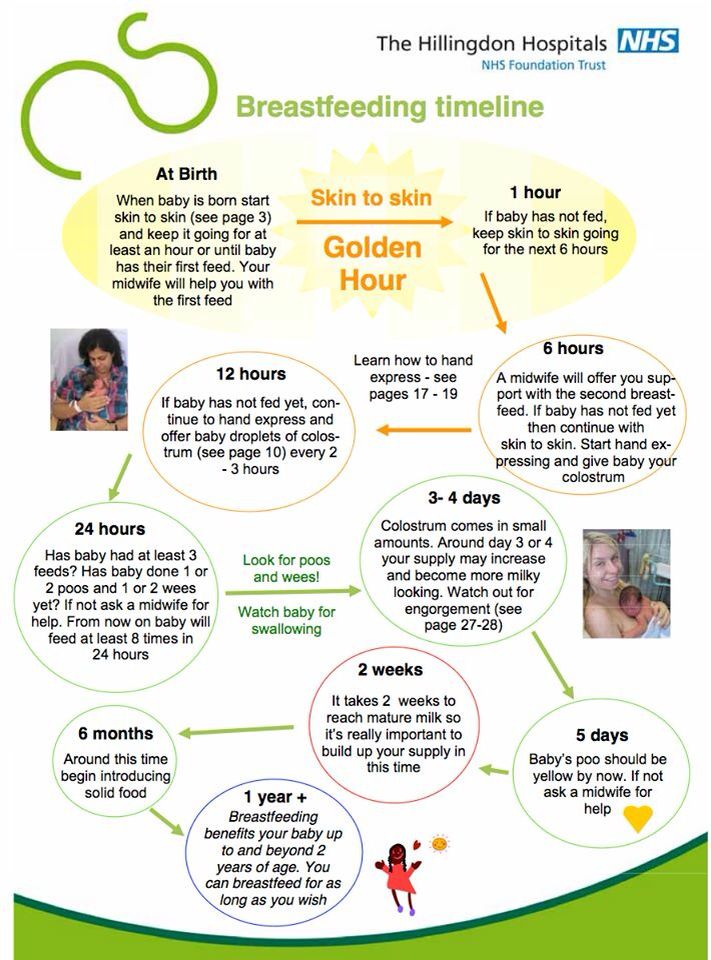 ), the total calorie content of the diet should be increased by 10% of the age norm. During the child's stay in health-improving institutions (holiday camps, forest schools, etc.) due to increased energy consumption (intensive physical education, swimming, hiking, etc.), it is also advisable to increase the calorie content of the diet by 10% with a uniform increase in all nutrients and preservation a balanced diet."
), the total calorie content of the diet should be increased by 10% of the age norm. During the child's stay in health-improving institutions (holiday camps, forest schools, etc.) due to increased energy consumption (intensive physical education, swimming, hiking, etc.), it is also advisable to increase the calorie content of the diet by 10% with a uniform increase in all nutrients and preservation a balanced diet."
According to the expert, a properly established diet is of great importance for school-age children. It is most expedient to establish the following diet: 1st meal - at 8:30; 2nd - at 12:00-13:00, 3rd - at 15:30 - 16:00, 4th - at 19:00. Breakfast and dinner should be 25% of the daily calorie intake, second breakfast - 15%, and lunch - 35% of the daily calorie intake.
If possible, school breakfasts should be hot. If this is not possible, then a milk-fruit breakfast (milk, bun, sweet curd cheese or processed cheese, fresh fruit) can be recommended. Lunch should consist of soup, a second course of meat (fish) and a side dish, a sweet dish (compote, jelly, juice or fresh fruit). It is desirable that before the first course there is a salad of fresh vegetables or a vinaigrette. A teenager can already be offered radishes, radishes with sour cream or vegetable oil, tomatoes, fresh cucumbers with green onions and sour cream instead of salad before meals. Vegetables stimulate appetite, promote the release of digestive juices and improve digestion.
It is desirable that before the first course there is a salad of fresh vegetables or a vinaigrette. A teenager can already be offered radishes, radishes with sour cream or vegetable oil, tomatoes, fresh cucumbers with green onions and sour cream instead of salad before meals. Vegetables stimulate appetite, promote the release of digestive juices and improve digestion.
According to Maria Mammadova, there are six groups of products that are simply vital for the full growth and development of a teenager.
- Complex carbohydrates . These are the main suppliers of energy, which is so necessary with rapid growth. They are found in cereals and cereals.
- Products containing protein . These are animal meat, poultry and fish. Protein is the main building material for soft tissues and internal organs. And, by the way, meat, especially red meat, contains iron, a lack of which can cause anemia in a teenager.
- Vegetable fiber . It is nothing but vegetables, root vegetables and fruits.
 Fiber is necessary for the normalization of the gastrointestinal tract and cleansing the body of toxins due to the natural antioxidants contained in these products.
Fiber is necessary for the normalization of the gastrointestinal tract and cleansing the body of toxins due to the natural antioxidants contained in these products. - Vegetable fats . These are vegetable oils and various nuts. Eating these foods can be a great way to help a teenager avoid the common problems of hair loss and brittle nails at this age.
- Milk and dairy products . These are irreplaceable suppliers of calcium, vitamin D and phosphorus in the nutrition of adolescents.
- Pure drinking water . For normal functioning of the body, you need to drink an amount of water per day at the rate of 30 ml per 1 kg of body weight. That is, a teenager who weighs 50 kg should drink 1.5 liters of pure water, not counting other liquids.
And if the younger generation adheres to these simple nutritional recommendations, health and normal development will be ensured.
“If in adolescence a person does not get used to healthy food and does not begin to eat right, then it will be quite difficult for him to change his habits and eating habits.
And problems associated with malnutrition can manifest themselves not only in being overweight, but also in the development of various diseases, ”says the doctor.
If you are serious about improving your child's diet, do not try to do it in one day. Here are a few steps to help you transition smoothly to a new diet.
- Start replacing your usual foods with healthier ones. At the same time, you can tell the teenager why you decided to do this, what knowledge you lacked before and where you got it.
- Make sure that the child does not get the feeling that you are depriving him of something. Let the impression be the opposite: we as a family decided to try something new, gain interesting experiences and improve the quality of life.
- Go shopping together, read the ingredients on a box of corn flakes, and try to choose ones that are free of refined sugar and artificial flavors.
- Find out more about nutrition, a balanced diet and physical activity, and most importantly, share this knowledge with your children.
 Ask them to tell you what is happening with their body, then they will become more aware of the issue and observe the effect of changing nutrition. And maybe they will look for information about it themselves.
Ask them to tell you what is happening with their body, then they will become more aware of the issue and observe the effect of changing nutrition. And maybe they will look for information about it themselves.
Parents are able to form an optimal eating behavior in a child. But remember that eating right yourself and setting a good example for children is much more important than talking long and hard about the benefits of healthy eating.
what not to feed a child on a permanent basis
Vika Vishnyakova
nutritionist
Author profile .
And if we want a child to be healthy and develop normally, then it is better to buy products from the shelves of children's stores, and in restaurants and cafes choose food from the children's menu. But in most cases, it's all just marketing.
We understand that it can be difficult to feed a child broccoli and healthy white fish, and if he only asks for corn flakes for breakfast, then it is easier for him to give them and avoid tantrums. This does not make you a bad parent.
This does not make you a bad parent.
I'll tell you why "baby" products can be dangerous.
Go see a doctor
Our articles are written with love for evidence-based medicine. We refer to authoritative sources and go to doctors with a good reputation for comments. But remember: the responsibility for your health lies with you and your doctor. We don't write prescriptions, we make recommendations. Relying on our point of view or not is up to you.
Cereals and corn flakes
Even if cereals contain iron, make the child smart and active, do not overdo it.
Breakfast products advertised for children contain 3 times more sugar than those advertised for adults: Spanish study
They are actually high in sugar and low in nutrients. This can lead to an unbalanced menu, when there are few macro and microelements important for the development and maintenance of health, and a lot of calories, sugar and salt.
For example, a 30-gram serving of Nestlé breakfast cereal contains about 14 g of sugar. Most often, we do not measure portions with the help of scales, but pour "by eye" - there can be more sugar. For a preschooler, this amount of sugar is the daily norm.
Most often, we do not measure portions with the help of scales, but pour "by eye" - there can be more sugar. For a preschooler, this amount of sugar is the daily norm.
This limit includes all added sugars in any form and with any name. Corn syrup, dextrose, coconut sugar, honey, Jerusalem artichoke syrup and agave nectar are also free sugars that WHO recommends limiting in the diet.
How to calculate sugar in foods: 61 sugars
Allowable amount of free sugars in a child's diet
| Age | How much sugar can you have per day |
|---|---|
| 4-6 years | 19 g or 5 teaspoons |
| 7-10 years | 24 g or 6 teaspoons |
| over 11 years old | 30 g or 7 teaspoons |
Age
How much sugar can per day
4-6 years
19 g, or 5 teaspoons
7-10 years
24 g, or 6 teaspoon
older
30 g or 7 teaspoons
The WHO and the American Heart Association recommend eliminating all added sugar up to 2 years and the UK Department of Health up to 4 years.
Breakfast alone can contain a daily amount of sugar, but in addition to breakfast, there are other meals, inconspicuous snacks, desserts and juice. It turns out to be an overkill.
If you regularly exceed the sugar norm, this can lead to unpleasant consequences:
- overweight;
- type 2 diabetes mellitus;
- cardiovascular diseases;
- caries;
- nutrients will be less absorbed.
And the passion for sugar changes the perception of tastes: the usual kiwi or peach seems not sweet enough, and sugary biscuits are just right. This can force other foods out of the diet.
All the health benefits of breakfast cereals are in the flour from which the balls or pillows are made. That is, ordinary cereals were cleaned of the shell - the most valuable element of the grain, ground into flour, added sugar in several forms, butter, starch and additional ingredients to improve taste and texture. To compensate for the loss of vitamins and trace elements that were removed along with the grain shell, the product can be enriched with vitamins and minerals. But this is not always done.
To compensate for the loss of vitamins and trace elements that were removed along with the grain shell, the product can be enriched with vitamins and minerals. But this is not always done.
/list/norm-menu/
The main thing is variety: a ready-made menu for the average Russian
If we gave children ordinary cereals, then there would be more fiber - food for beneficial bacteria in the intestines, the very vitamin B with which the manufacturer promised to increase the ingenuity of consumers, others important trace elements and there would be no added sugar.
Juices
The Union of Pediatricians of Russia notes that juices contain few vitamins and minerals, but a lot of sugar, so they should not be offered before 12 months. The habit of drinking juices can increase the risk of tooth decay and obesity.
The WHO, European and American Societies of Pediatrics do not recommend giving free sugars to children under 2 years of age.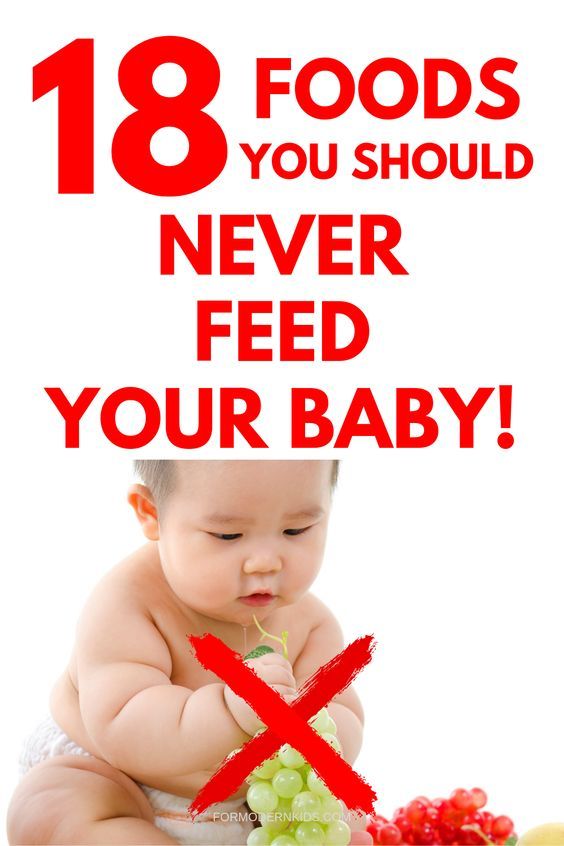 And juice is one of their forms. If fiber is removed from the product, but only juice or its concentrate is left, then the product goes into the section of free sugars - “free” from fiber. That is, any juice - even marked "without sugar" - is still a variant of sugar.
And juice is one of their forms. If fiber is removed from the product, but only juice or its concentrate is left, then the product goes into the section of free sugars - “free” from fiber. That is, any juice - even marked "without sugar" - is still a variant of sugar.
Whole fruits should not be limited in the diet: it is almost impossible to get an excess of sugars from them, but from juices it is easy. For example, it takes me four oranges to make a glass of freshly squeezed juice. A child will drink such a glass in one minute and ask for more. But if I cut these four oranges, he will manage two at best. At the same time, the child will receive fiber, vitamins, minerals and a bonus in the form of training the jaw apparatus.
A glass of freshly squeezed juice may be in the diet of a child over 7 years of age. Until this age, pediatric organizations recommend giving juices occasionally and diluting with water in a ratio of 1:1.
Unicef - what to feed a baby up to 1 year old
A package of baby juice can contain up to 6 tablespoons of free sugars, absolutely no fiber and a dubious amount of vitamins, because almost all of them are destroyed during the production process. And a whole apple contains 5 g of fiber - that's 20% of the daily value for adults, 9mg magnesium and 0 g free sugars.
And a whole apple contains 5 g of fiber - that's 20% of the daily value for adults, 9mg magnesium and 0 g free sugars.
The link between juice consumption and excess weight: Harvard Medical School
Dairy products for children
By itself, milk, kefir and fermented baked milk are essential foods in the diet. From them, children get calcium, protein, various microelements, and from fermented milk products they also get beneficial bacteria.
But now, baby dairy products are not always a good option, despite the labels "from 6 months" on the packages. The point here is not in the milk itself and its derivatives, but again in exceeding the safe norms of sugar with the regular use of such products.
Nutrition for children aged 1-3 years: guidelines from the Union of Pediatricians of Russia
Dairy guidelines: American Pediatric Association
WHO recommends 2-3 servings of dairy products per day: each serving is the size of a child's fist. For example, it can be 100 ml of kefir or a jar of non-drinkable yogurt 120 g.
But if you put 1-3 teaspoons of sugar in each of them, as manufacturers of children's yogurts do, you get a search for the norm of sugars with all the ensuing consequences for health . In addition, we can form the wrong taste preferences: after the “strawberry flavored” option, ordinary fermented baked milk may seem insipid to the child and he will refuse it. Therefore, it will be more useful to give ryazhenka without additives and put a couple of berries in it for taste.
"Children's menu" in restaurants and cafes
Most often, the children's menu offers french fries, sausages, nuggets and dumplings. It seems that this is a variant of a normal lunch for children.
Almost all of these products are ultra-processed. That is, those in which there are almost no nutrients, but there are a large number of flavor enhancers and preservatives: salt, sugar and fats. Yes, they affect our receptors and such food seems tasty, but there is very little nutritional value in it.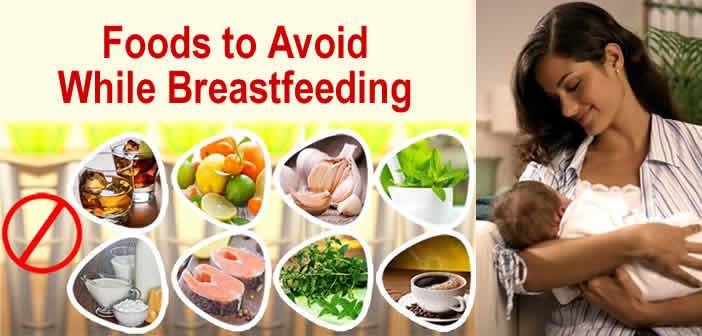
There is a connection between the regular consumption of ultra-processed food and lipid metabolism disorders in children. In the future, this can lead to atherosclerosis and an increased risk of cardiovascular disease. And also to an imbalance in nutrition, metabolic disorders and obesity.
Study on the association of frequent consumption of fast food and obesity in children
Scientific review on the impact of fast food on children's health
Ultra-processed foods can be included in the diet of adults and children, but as an addition to the main balanced diet, not as a replacement for it.
If you feed this food daily, then the children form the idea that this is a normal food option. Then why eat broccoli and shrimp on another day? Food with an adequate level of nutritional value can be forced out of the diet, and this is fraught with a deficiency of essential substances.
Therefore, when looking at the menu with your child, it is important to draw his attention to the fact that nuggets and fries are more of an addition to the main course, and if you need to satisfy your hunger, then it is better to choose alternatives with a higher nutritional value. And be prepared for the question "If this is not children's food, then why is it on the children's menu?".
/list/free-for-kids/
Going to a cafe with your family and not going broke: 7 places in Moscow with a free children's menu child, because it is sold in a pharmacy. It is also much healthier than candy because it contains iron. The same applies to ascorbic acid in dragee format: vitamin C in a "candy" package is just a godsend for parents who want to strengthen their child's immunity.
A 50g hematogen bar contains about 5g of iron and 30-40g of sugar. For comparison: the same amount of iron in 25 g of stewed liver, 30 g of sesame seeds, 12 tablespoons of boiled lentils or 150 g of beef steak.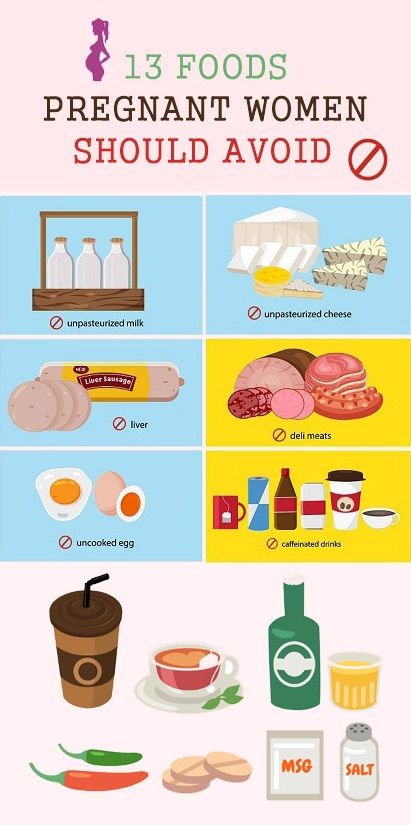 Moreover, these products do not contain added sugar.
Moreover, these products do not contain added sugar.
One dragee of ascorbic acid weighing 2.9 g contains 2.8 g of sugar, and ascorbic acid itself is only 25 mg - 112 times less than sugar. The same amount can be obtained from 50 g of bell pepper or half a kiwi.
If you do not live in conditions of total food shortage, then the child does not need either hematogen or ascorbic acid. They may be optional, as a dessert, but not as a necessary means to maintain health.
/list/healthy-eating-myths/
No Sugar or Carbs: 6 Healthy Eating Myths
Bottom Line
- Baby food is not a set of products with cartoon characters on the packaging and the inscription “from 6 months”.
- Children's diet is the usual food groups: vegetables, fruits, cereals, dairy products, protein sources and moderate amounts of fats, among which unsaturated fats are preferred. Minimum salt, moderate amount of sugar.
- Products targeted at children often contain too many free sugars, but this is not always clear from looking at the front of the package.









